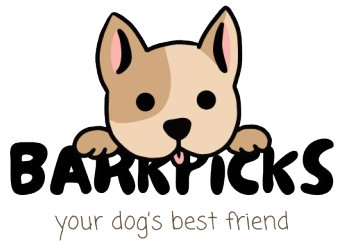The Deerhound, often called the Scottish Deerhound, is a breed of quiet dignity, striking beauty, and deep loyalty. Known for its graceful build and noble spirit, the Deerhound has been a cherished companion of the Scottish nobility for centuries. With its gentle nature and powerful frame, this breed is often referred to as the “Royal Dog of Scotland” — a fitting title for a dog that embodies both elegance and strength.
A Glorious History
The Deerhound’s history stretches back to ancient Scotland, where it was bred to hunt the red deer, the largest native deer species. Before firearms made hunting easier, chasing and bringing down a swift, powerful deer required a dog with exceptional speed, stamina, and courage. The Deerhound was that dog.
In medieval Scotland, owning a Deerhound was a privilege reserved for the nobility. It was said that no one of rank lower than an earl could possess one. These dogs were so highly prized that they were often given as gifts to royalty and were featured in art, literature, and legends throughout Scottish history.
Sadly, the breed’s numbers declined with the fall of the Scottish clan system and changes in hunting practices. However, dedicated breeders in the 19th century, particularly the Duncan brothers, worked hard to revive the breed and preserve its noble legacy.
Appearance and Physical Traits
The Deerhound is often described as a larger, rougher-coated Greyhound. Standing between 28 and 32 inches tall at the shoulder and weighing between 75 and 110 pounds, this breed cuts an impressive figure. Despite its size, the Deerhound is built for speed and agility, with a narrow body, long legs, and a deep chest.
Its coat is a signature feature — rough, wiry, and weather-resistant, usually in shades of gray, though blue-gray is the most common. The rough coat helped protect them against the harsh conditions of the Scottish Highlands. Their long, tapering tail and dark, soulful eyes add to their majestic appearance.
Temperament and Personality
Despite their formidable size, Deerhounds are gentle and affectionate companions. They are known for their calm, friendly, and polite nature. They bond deeply with their families and are often content to lounge quietly at their owner’s feet, enjoying companionship without being overly demanding.
Deerhounds are also famously good with children and other dogs, displaying a patient and tolerant attitude. However, due to their strong prey drive — a legacy of their hunting days — they may chase smaller animals if not properly trained and socialized.
They are sensitive dogs, both emotionally and physically. Harsh training methods or loud environments can easily unsettle them. Instead, they respond best to gentle, consistent training and a peaceful home atmosphere.
Exercise and Training Needs
While Deerhounds are content to laze about indoors, they require regular exercise to stay healthy and happy. They enjoy long walks, runs in open spaces, and opportunities to stretch their legs. A securely fenced yard is ideal, as they can sprint at impressive speeds when they see something interesting.
Training a Deerhound requires patience. They are intelligent but also independent thinkers. They often see little point in repetitive tasks, so training sessions should be kept short, varied, and positive. Early socialization is crucial to help them grow into well-mannered adults.
It’s important to remember that off-leash play in unenclosed areas can be risky due to their instinct to chase. Even the best-trained Deerhound may find it impossible to resist running after a moving animal.
Health and Care
Like many large breeds, Deerhounds have relatively short lifespans, averaging 8 to 11 years. They are generally healthy but can be prone to certain conditions, including:
- Dilated Cardiomyopathy (DCM): A heart disease affecting many sighthounds.
- Osteosarcoma: A type of bone cancer more common in large breeds.
- Bloat (Gastric Torsion): A life-threatening condition requiring immediate attention.
Maintaining a healthy weight, providing regular veterinary care, and feeding high-quality food can help support their well-being.
Grooming the Deerhound is relatively easy. Weekly brushing will help manage their rough coat and reduce shedding. Occasional baths and routine ear cleaning, nail trimming, and dental care are also important parts of their grooming needs.
Ideal Home Environment
The Deerhound thrives in homes where they have space to roam and a family that appreciates their gentle nature. While they can adapt to urban living if given enough exercise, they are happiest in homes with access to large, securely fenced yards or countryside settings.
They are quiet, unobtrusive housemates who prefer soft bedding and cozy corners. They get along well with other dogs, especially fellow sighthounds, and enjoy being part of a household rather than being left alone for long periods.
Conclusion
The Deerhound is a breed that captures the heart with its regal appearance, serene spirit, and boundless loyalty. A true aristocrat among dogs, it offers companionship filled with quiet devotion and affectionate grace. For those seeking a gentle, noble companion with a touch of ancient history, the Deerhound is a breed like no other — a living link to the grandeur and romance of Scotland’s past.







